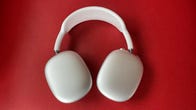While earbuds like Apple’s AirPods and AirPods Pro may be the dominant headphones these days, there’s something to be said about a huge pair of around-the-ear headphones. These are — if you get the right pair — able to deliver bigger, richer sound than buds with excellent noise cancellation to block out external noise.
And technology hasn’t left over-the-ear headphones behind. The ones available these days are wireless and connect to your devices via Bluetooth. They also often include features like noise cancellation to filter out ambient noise and microphones so you can use them to take calls or even as a gaming headset. That said, most wireless headphones — except notably the AirPods Max — include an audio cable, so a wired option is available for those seeking it.
Here’s a look at the best headphone options that go over your ears. When making my picks, I considered factors such as build quality, battery life, ear pad comfort, features like active noise cancellation and audio quality. I’ve included some affordable headphones as well as more expensive options, so you’ll find a good set of earphones regardless of your budget. I’ll update this list regularly as CNET reviews new products.
Read more: Best headphones for 2022

 \n ","topic":"","ttag":"","variant":"","viewguid":"","event":"listicle|image|1","correlationId":"","_destCat":"https:\/\/www.amazon.com\/New-Apple-AirPods-Max-Silver\/dp\/B08PZD76NP","productName":"High-end noise-canceling option","formatType":"IMAGE","location":"LIST","position":1,"sku":"MGYJ3AM\/A","dwLinkTag":"article-body|listicle|image","selector":"#article-body #listicle-525eb294-fa8f-45d3-9b71-698356786051 .itemImage"}}” rel=”noopener nofollow” target=”_blank”>
\n ","topic":"","ttag":"","variant":"","viewguid":"","event":"listicle|image|1","correlationId":"","_destCat":"https:\/\/www.amazon.com\/New-Apple-AirPods-Max-Silver\/dp\/B08PZD76NP","productName":"High-end noise-canceling option","formatType":"IMAGE","location":"LIST","position":1,"sku":"MGYJ3AM\/A","dwLinkTag":"article-body|listicle|image","selector":"#article-body #listicle-525eb294-fa8f-45d3-9b71-698356786051 .itemImage"}}” rel=”noopener nofollow” target=”_blank”>


David Carnoy/CNET
Yes, they’re expensive, but the AirPods Max deliver richer, more detailed sound than lower-priced competitors from Bose and Sony. They also feature arguably the best noise cancellation on the market, along with premium build quality and Apple’s virtual surround-sound spatial audio feature for video watching. While they’re heavy, they manage to be surprisingly comfortable, though I did have to adjust the mesh canopy headband to sit a little more forward on my head to get a comfortable secure fit when I was out walking with them. They should fit most heads well, but there will be exceptions. These are one of the best pairs of noise canceling headphones.

 \n ","topic":"","ttag":"","variant":"","viewguid":"","event":"listicle|image|2","correlationId":"","_destCat":"https:\/\/www.amazon.com\/Sony-WH-1000XM4-Canceling-Headphones-phone-call\/dp\/B0863TXGM3","productName":"Sony\u0027s top noise-canceling headphones","formatType":"IMAGE","location":"LIST","position":2,"sku":"WH1000XM4\/S","dwLinkTag":"article-body|listicle|image","selector":"#article-body #listicle-5272c471-395e-441c-9563-70caecb06a56 .itemImage"}}” rel=”noopener nofollow” target=”_blank”>
\n ","topic":"","ttag":"","variant":"","viewguid":"","event":"listicle|image|2","correlationId":"","_destCat":"https:\/\/www.amazon.com\/Sony-WH-1000XM4-Canceling-Headphones-phone-call\/dp\/B0863TXGM3","productName":"Sony\u0027s top noise-canceling headphones","formatType":"IMAGE","location":"LIST","position":2,"sku":"WH1000XM4\/S","dwLinkTag":"article-body|listicle|image","selector":"#article-body #listicle-5272c471-395e-441c-9563-70caecb06a56 .itemImage"}}” rel=”noopener nofollow” target=”_blank”>


David Carnoy/CNET
Sony’s earlier WH-1000XM3 headphones were great. But if they had a weakness, it was voice calling, particularly in noisier environments. The WH-1000XM4 noise-canceling headphone has improved in that area and also adds multipoint Bluetooth pairing so you can connect to two devices — such as your phone and your PC — at the same time. That means that if a call comes in while you’re using the headphones with your computer, the audio will switch to your phone when you answer the call.
The Bose Noise Cancelling Headphones 700 probably still have a slight edge for voice calls, but the 1000XM4 headphones are arguably a tad more comfortable – thanks to the ear cup size – and also have some other slight improvements to noise cancellation and sound that make this model a great all-around choice. Even better: This model gets regularly discounted.

 \n ","topic":"","ttag":"","variant":"","viewguid":"","event":"listicle|image|3","correlationId":"","_destCat":"https:\/\/www.amazon.com\/beyerdynamic-Closed-Back-Headphones-Stellar-45-Monitoring\/dp\/B09G75RWN2\/","productName":"Best new wired studio headphones","formatType":"IMAGE","location":"LIST","position":3,"sku":"","dwLinkTag":"article-body|listicle|image","selector":"#article-body #listicle-a3e8f071-aac2-4d48-8a1b-e4dd7a780d2f .itemImage"}}” rel=”noopener nofollow” target=”_blank”>
\n ","topic":"","ttag":"","variant":"","viewguid":"","event":"listicle|image|3","correlationId":"","_destCat":"https:\/\/www.amazon.com\/beyerdynamic-Closed-Back-Headphones-Stellar-45-Monitoring\/dp\/B09G75RWN2\/","productName":"Best new wired studio headphones","formatType":"IMAGE","location":"LIST","position":3,"sku":"","dwLinkTag":"article-body|listicle|image","selector":"#article-body #listicle-a3e8f071-aac2-4d48-8a1b-e4dd7a780d2f .itemImage"}}” rel=”noopener nofollow” target=”_blank”>


David Carnoy/CNET
We were fans of Beyerdynamic’s earlier DT 770 Pro headphones. The new DT 700 X is easier to drive than the 770 Pro, thanks to the company’s new STELLAR.45 sound transducer with an impedance of 48 ohms, so it plays better with smartphones, tablets and laptops without requiring a headphone amp.
The headphone is targeted at content creators who want accurate audio reproduction, but it’s a bit more dynamic sounding and less bass shy than many studio headphones, which tend to restrain the bass and hew toward a very neutral sound profile. The DT 700 X is a revealing, clean-sounding headphone that offers invitingly open sound (particularly for a closed-back headphone) and makes you realize what you’re missing after listening to similarly priced Bluetooth headphones.
Unlike the earlier DT 770 Pro, which is being sold at a nice discount (around $160), the DT 700 X comes with two interchangeable (detachable) straight cables in different lengths, and the DT 700 X arguably has a little cleaner look than its predecessor.
The solidly built headphone — it weighs 350 grams — is quite comfortable, featuring upgraded soft, velour-covered memory foam earpads that offer decent passive noise isolation. The earpads and the headphones’ other parts are replaceable, Beyerdynamic says.
Beyerdynamic also sells the open-back DT 900 X for the same price. That model should provide slightly more open, airy sound but the big drawback is people around you can hear whatever you’re listening to — and sound also leaks in. This closed-back version is more versatile.

 \n ","topic":"","ttag":"","variant":"","viewguid":"","event":"listicle|image|4","correlationId":"","_destCat":"https:\/\/www.bose.com\/en_us\/products\/headphones\/noise_cancelling_headphones\/quietcomfort-headphones-45.html#v=qc45_white_smoke","productName":"Improved QuietComfort","formatType":"IMAGE","location":"LIST","position":4,"sku":"866724-0100","dwLinkTag":"article-body|listicle|image","selector":"#article-body #listicle-c61d77ee-73e8-48d4-a356-ed0d2a4dadd2 .itemImage"}}” rel=”noopener nofollow” target=”_blank”>
\n ","topic":"","ttag":"","variant":"","viewguid":"","event":"listicle|image|4","correlationId":"","_destCat":"https:\/\/www.bose.com\/en_us\/products\/headphones\/noise_cancelling_headphones\/quietcomfort-headphones-45.html#v=qc45_white_smoke","productName":"Improved QuietComfort","formatType":"IMAGE","location":"LIST","position":4,"sku":"866724-0100","dwLinkTag":"article-body|listicle|image","selector":"#article-body #listicle-c61d77ee-73e8-48d4-a356-ed0d2a4dadd2 .itemImage"}}” rel=”noopener nofollow” target=”_blank”>
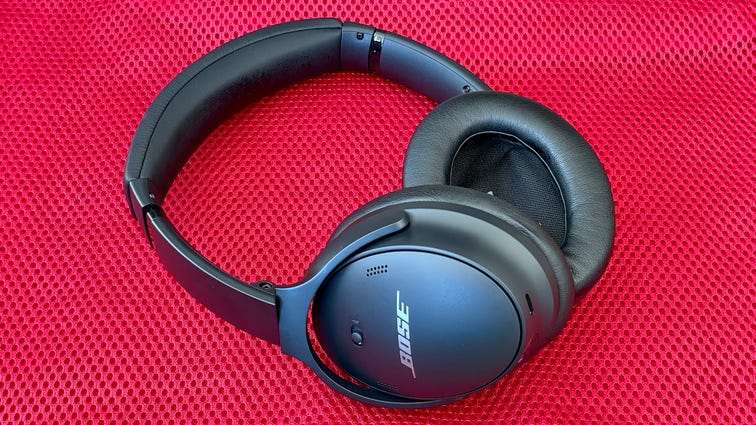

David Carnoy/CNET
The Bose QuietComfort 45 essentially looks the same as its popular predecessor, the QuietComfort 35 II, with the biggest design difference being a USB-C port in place of the older Micro-USB. (At 238 grams, the QC45 weighs just 3 grams more than the QC35, which should be imperceptible.) And while the Bose 700 have plenty of fans, a lot of people (including me think this QuietComfort design is slightly more comfortable and the headphones fold up and fold flat. It’s arguably the most comfortable pair of headphones out there.
They also sound very similar to the QC 35 II, with no change to the drivers. Where you’ll see an improvement is with the noise cancellation (there’s a transparency mode), which very well could be the best out right now. According to Bose, there’s a new electronics package that powers the new ANC system, which now better muffles “unwanted sounds in the midrange frequencies” (voices) that you’d “typically find on commuter trains, busy office spaces and cafes.”
I found that to be true and give these the slight edge over both the Headphones 700 and Sony WH-1000XM4 for noise canceling. That said, you can’t adjust the level of noise canceling like you can with those models, which offer a more robust feature set, particularly the Sony. You also can’t tweak the sound in the app; there’s no equalizer settings.
The headset performance has also improved, with better noise reduction during calls. And these offer multipoint Bluetooth pairing. That means you can pair the QC45 with two devices simultaneously — such as a smartphone and PC — and switch audio as needed. They’re equipped with Bluetooth 5.1 and support the widely compatible AAC audio codec but not AptX.
While these have advantages over the Headphones 700 and Sony WH-1000XM4 and do sound quite good, those models sound slightly better: The 700 is slightly more natural sounding and tuned more for audiophiles, while the Sony has more dynamic bass. So that makes choosing between these three models that much more difficult.

 \n ","topic":"","ttag":"","variant":"","viewguid":"","event":"listicle|image|5","correlationId":"","_destCat":"https:\/\/www.anrdoezrs.net\/links\/3586864\/type\/dlg\/sid\/[subid_value]\/https:\/\/www.bose.com\/en_us\/products\/headphones\/noise_cancelling_headphones\/noise-cancelling-headphones-700.html#v=noise_cancelling_headphones_700_black","productName":"Strong all-around performer","formatType":"IMAGE","location":"LIST","position":5,"sku":"794297-0100","dwLinkTag":"article-body|listicle|image","selector":"#article-body #listicle-d34377f4-643f-49b2-bdbb-8700332a8266 .itemImage"}}” rel=”noopener nofollow” target=”_blank”>
\n ","topic":"","ttag":"","variant":"","viewguid":"","event":"listicle|image|5","correlationId":"","_destCat":"https:\/\/www.anrdoezrs.net\/links\/3586864\/type\/dlg\/sid\/[subid_value]\/https:\/\/www.bose.com\/en_us\/products\/headphones\/noise_cancelling_headphones\/noise-cancelling-headphones-700.html#v=noise_cancelling_headphones_700_black","productName":"Strong all-around performer","formatType":"IMAGE","location":"LIST","position":5,"sku":"794297-0100","dwLinkTag":"article-body|listicle|image","selector":"#article-body #listicle-d34377f4-643f-49b2-bdbb-8700332a8266 .itemImage"}}” rel=”noopener nofollow” target=”_blank”>
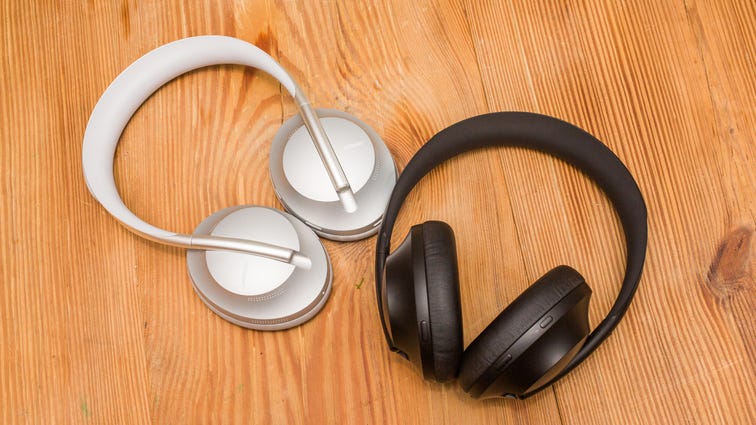

Sarah Tew/CNET
The Bose Noise Cancelling Headphones 700, the long-awaited successor to Bose’s QuietComfort 35 II model, may not be a quantum leap forward, but these headphones offer slightly better sound and noise cancellation along with top-notch headset performance for voice calls. They’re a strong all-around audio performer (some prefer their sound profile to that of Sony’s WH-1000XM4) with up to 20 hours of battery life and a more durable design than their predecessor, although the QuietComfort 35 II headphones may be slightly more comfortable.
At launch, they cost $400, but they’ve come down in price. We’ve seen the white version dip as low as $299, while the black and silver versions have hit $340. That said, Sony’s WH-1000XM4, their closest competitor, has also seen nice discounts.

 \n ","topic":"","ttag":"","variant":"","viewguid":"","event":"listicle|image|6","correlationId":"","_destCat":"https:\/\/www.amazon.com\/Bang-Olufsen-Beoplay-Comfortable-Headphones\/dp\/B08V1L2QMB","productName":"AirPods Max competitor","formatType":"IMAGE","location":"LIST","position":6,"sku":"","dwLinkTag":"article-body|listicle|image","selector":"#article-body #listicle-bd2e7ea6-8a8e-45bf-acc5-305b48f1e779 .itemImage"}}” rel=”noopener nofollow” target=”_blank”>
\n ","topic":"","ttag":"","variant":"","viewguid":"","event":"listicle|image|6","correlationId":"","_destCat":"https:\/\/www.amazon.com\/Bang-Olufsen-Beoplay-Comfortable-Headphones\/dp\/B08V1L2QMB","productName":"AirPods Max competitor","formatType":"IMAGE","location":"LIST","position":6,"sku":"","dwLinkTag":"article-body|listicle|image","selector":"#article-body #listicle-bd2e7ea6-8a8e-45bf-acc5-305b48f1e779 .itemImage"}}” rel=”noopener nofollow” target=”_blank”>
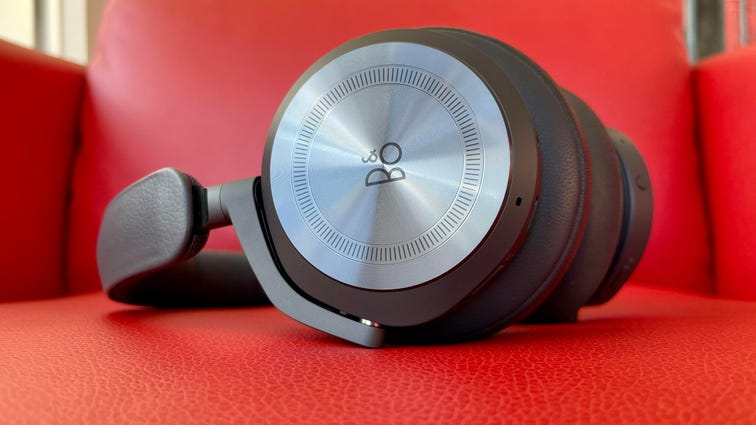

David Carnoy/CNET
Bang & Olufsen’s Beoplay HX headphones are the successor to the company’s H9 series headphones (the X is the Roman numeral 10) and, like those earlier H9 models, the HX headphones carry a list price of $500 (some colors are discounted at Amazon). That price makes it a direct competitor of Apple’s AirPods Max, which are heavier at 384.8 grams versus the HX’s 285 grams. I don’t know if the HX headphones are more comfortable than the AirPods Max, but I found the two models pretty equal in the comfort department over longer listening sessions, and these do feature the usual swanky B&O lambskin-covered memory foam earpads.
The HX has custom 40mm drivers, Bluetooth 5.1 and support for Qualcomm’s aptX Adaptive (that includes AptX HD) for high-resolution wireless streaming when you combine an aptX-enabled Android device with certain music-streaming services like Qobuz.
Their sound measures up well to the AirPods Max’s sound, overall well-balanced, with deep, well-defined bass, natura-sounding mids (where vocals live) and inviting detail in the treble. If you want to push the treble or bass, you can tweak the EQ in the Bang & Olufsen app for iOS and Android and give the headphones a warmer or brighter profile.
While these are expensive, they offer more accurate sound than the Sony WH-1000XM4. Their noise canceling is also very good and voice-calling capabilities are also quite solid. Additionally, they offer multipoint Bluetooth pairing so you can connect them with a smartphone and PC simultaneously (Microsoft Swift Pair-enabled for Windows machines) so you can easily switch between the two. (The Sony WH-1000XM4 headphones also have this feature.) Battery life is rated at up to 35 hours with noise canceling on and 40 hours with it off. Those are excellent numbers.
Earlier Bang & Olufsen models included a soft case (a pouch really), but the HX headphones come with a hard case. As I said, they’re expensive, but the small improvements over earlier flagship Bang & Olufsen noise-canceling headphones help make the HX headphones a worthy alternative to the AirPods Max.

 \n ","topic":"","ttag":"","variant":"","viewguid":"","event":"listicle|image|7","correlationId":"","_destCat":"https:\/\/www.amazon.com\/JBL-Tour-Cancelling-Headphones-Black\/dp\/B092CJJ37Y","productName":"JBL\u0027s best","formatType":"IMAGE","location":"LIST","position":7,"sku":"JBLTOURONEBLKAM","dwLinkTag":"article-body|listicle|image","selector":"#article-body #listicle-5a9f51ab-890d-46b8-8e20-8d4df49ebf36 .itemImage"}}” rel=”noopener nofollow” target=”_blank”>
\n ","topic":"","ttag":"","variant":"","viewguid":"","event":"listicle|image|7","correlationId":"","_destCat":"https:\/\/www.amazon.com\/JBL-Tour-Cancelling-Headphones-Black\/dp\/B092CJJ37Y","productName":"JBL\u0027s best","formatType":"IMAGE","location":"LIST","position":7,"sku":"JBLTOURONEBLKAM","dwLinkTag":"article-body|listicle|image","selector":"#article-body #listicle-5a9f51ab-890d-46b8-8e20-8d4df49ebf36 .itemImage"}}” rel=”noopener nofollow” target=”_blank”>


David Carnoy/CNET
JBL’s Tour One are the company’s 2021 flagship pair of noise-canceling Bluetooth headphone and they’re very good. Not only are they comfortable to wear, with nicely padded earcups and a relatively light design, but they also deliver strong sound quality. The bass is punchy, there’s good clarity and the headphones have a pretty wide soundstage. I also like the touch controls, and the adaptive noise canceling is solid and so too is headset performance for voice calling. Battery life is rated at 25 hours with noise cancellation on and up to 50 hours with it off.
In a lot of ways, particularly their design (and sound, to a degree), the Tour One headphones are quite similar to the Sony WH-1000XM4. Even their cases look alike. But the Tour One model isn’t quite as good as the WH-1000XM4 and is missing a couple of the WH-1000XM4’s features, including multipoint Bluetooth pairing.

 \n ","topic":"","ttag":"","variant":"","viewguid":"","event":"listicle|image|8","correlationId":"","_destCat":"https:\/\/www.amazon.com\/V-MODA-M-200-Professional-Studio-Headphone\/dp\/B07YXBPGG7","productName":"V-Moda audiophile headphones","formatType":"IMAGE","location":"LIST","position":8,"sku":"M-200","dwLinkTag":"article-body|listicle|image","selector":"#article-body #listicle-345430b1-36d0-4ade-972c-527aebab0d79 .itemImage"}}” rel=”noopener nofollow” target=”_blank”>
\n ","topic":"","ttag":"","variant":"","viewguid":"","event":"listicle|image|8","correlationId":"","_destCat":"https:\/\/www.amazon.com\/V-MODA-M-200-Professional-Studio-Headphone\/dp\/B07YXBPGG7","productName":"V-Moda audiophile headphones","formatType":"IMAGE","location":"LIST","position":8,"sku":"M-200","dwLinkTag":"article-body|listicle|image","selector":"#article-body #listicle-345430b1-36d0-4ade-972c-527aebab0d79 .itemImage"}}” rel=”noopener nofollow” target=”_blank”>


Sarah Tew/CNET
V-Moda’s M-200 are one of the few wired headphones on this list. Released in late 2019, these clean and detailed sounding over-ear headphones have excellent bass response, and the cushy earcups mean they’re also comfortable to wear. Featuring 50mm drivers with neodymium magnets, CCAW voice coils and fine-tuning by Roland engineers — yes, V-Moda is now owned by Roland — the M‑200 is Hi‑Res Audio-certified by the Japan Audio Society. Other V-Moda headphones tend to push the bass a little, but this set has the more neutral profile that you’d expect from studio monitor headphones. They come with two cords, one of which has a built-in microphone for making calls. It would be nice if V-Moda offered Lightning or USB-C cables for phones without headphone jacks.
Note that last year V-Moda released the M-200 ANC ($500), a wireless version of these headphones that includes active noise canceling. They also sound great, but their noise cancellation, call quality and overall feature set don’t match those of the AirPods Max.

 \n ","topic":"","ttag":"","variant":"","viewguid":"","event":"listicle|image|9","correlationId":"","_destCat":"https:\/\/www.amazon.com\/Sennheiser-Momentum-Cancelling-Headphones-Functionality\/dp\/B07VW98ZKG","productName":"Impressive sound","formatType":"IMAGE","location":"LIST","position":9,"sku":"508234","dwLinkTag":"article-body|listicle|image","selector":"#article-body #listicle-64e20ccd-679e-4034-a61a-576d32eb70ef .itemImage"}}” rel=”noopener nofollow” target=”_blank”>
\n ","topic":"","ttag":"","variant":"","viewguid":"","event":"listicle|image|9","correlationId":"","_destCat":"https:\/\/www.amazon.com\/Sennheiser-Momentum-Cancelling-Headphones-Functionality\/dp\/B07VW98ZKG","productName":"Impressive sound","formatType":"IMAGE","location":"LIST","position":9,"sku":"508234","dwLinkTag":"article-body|listicle|image","selector":"#article-body #listicle-64e20ccd-679e-4034-a61a-576d32eb70ef .itemImage"}}” rel=”noopener nofollow” target=”_blank”>
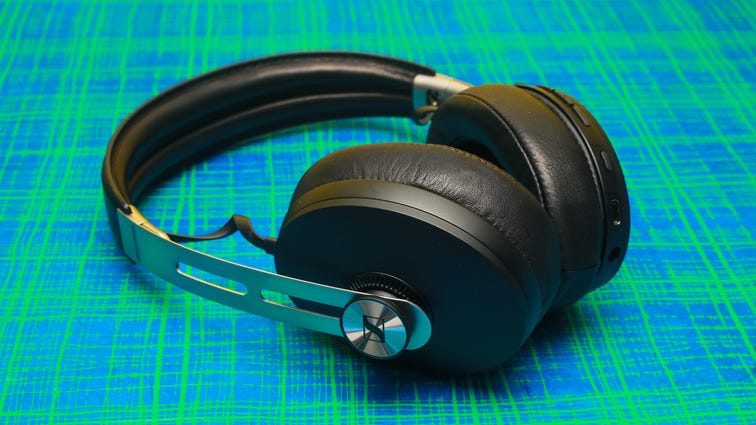

Sarah Tew/CNET
When it comes to premium noise-canceling headphones, Bose and Sony have been the dominant players over the last few years. But Sennheiser’s Momentum 3 Wireless headphones, which came out in late 2019, deserve some attention, particularly from fans of the Momentum line. They list for $400, but have come down in price (you can sometimes find them for closer to $300).
Not only does this model have improved noise-canceling features and great sound and audio, but it also performs well as a headset for making calls. While in noise cancellation and comfort level the Momentum 3 headphones don’t quite measure up to the Sony WH-1000XM4, I appreciated the nicely padded earcups covered with sheep leather and had no trouble rocking them for a 2-hour music listening session, to say nothing of the battery life.

 \n ","topic":"","ttag":"","variant":"","viewguid":"","event":"listicle|image|10","correlationId":"","_destCat":"https:\/\/www.amazon.com\/Soundcore-Cancelling-Headphones-Comfortable-Bluetooth\/dp\/B08HMWZBXC\/","productName":"Best noise cancellation under $100","formatType":"IMAGE","location":"LIST","position":10,"sku":"A3028011","dwLinkTag":"article-body|listicle|image","selector":"#article-body #listicle-c4ea050e-ad29-43cc-a522-c49f9e01f868 .itemImage"}}” rel=”noopener nofollow” target=”_blank”>
\n ","topic":"","ttag":"","variant":"","viewguid":"","event":"listicle|image|10","correlationId":"","_destCat":"https:\/\/www.amazon.com\/Soundcore-Cancelling-Headphones-Comfortable-Bluetooth\/dp\/B08HMWZBXC\/","productName":"Best noise cancellation under $100","formatType":"IMAGE","location":"LIST","position":10,"sku":"A3028011","dwLinkTag":"article-body|listicle|image","selector":"#article-body #listicle-c4ea050e-ad29-43cc-a522-c49f9e01f868 .itemImage"}}” rel=”noopener nofollow” target=”_blank”>
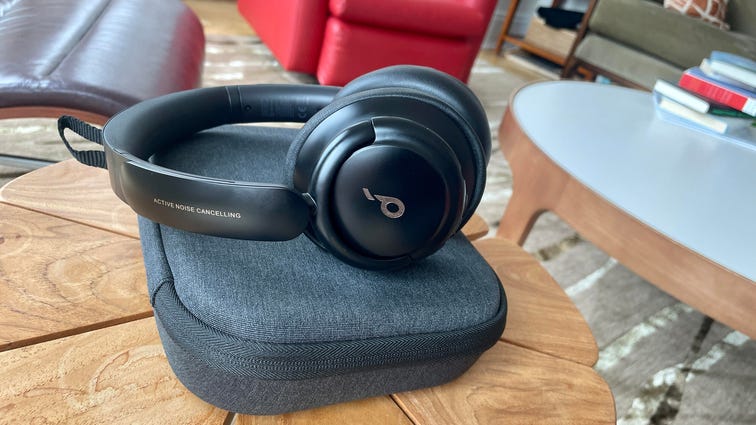

David Carnoy/CNET
Premium noise-canceling headphones tend to cost more than $300. But what if you’re on a tight budget — what’s your best option for noise-canceling over-ear headphones?
As far as sound, comfort level and build quality, you’d be hard-pressed to do better than Anker’s SoundCore Life Q30 for the money. They don’t quite have the same clarity or bass definition as some of the top premium models, but they’re less than a third of the price and get you about 75% of the way there in terms of sound: It’s well-balanced overall with punchy bass, and there’s an app that allows you to tweak the sound. The noise canceling is good for the price, though not up to the level of the Sony WH-1000XM4 or Bose Noise Cancelling Headphones 700. Battery life is rated at an impressive 40 hours with USB-C charging.
The only area where the Q30 headphones fall a little short is voice calls. They pick up your voice fine in quieter environments, but they just don’t reduce background noise all that well.
Compared with the step-down Q20, the Q30 headphones do offer improved sound (it’s not a huge difference, but it definitely is a notch up) and a more premium design.

 \n ","topic":"","ttag":"","variant":"","viewguid":"","event":"listicle|image|11","correlationId":"","_destCat":"https:\/\/www.amazon.com\/Bowers-Wilkins-Bluetooth-Headphone-Cancelling\/dp\/B07WK5XT8T","productName":"Luxury looks, Luxury sound","formatType":"IMAGE","location":"LIST","position":11,"sku":"FP41289","dwLinkTag":"article-body|listicle|image","selector":"#article-body #listicle-c2d59cc6-2ddc-4e42-983c-c6b7d59da4c5 .itemImage"}}” rel=”noopener nofollow” target=”_blank”>
\n ","topic":"","ttag":"","variant":"","viewguid":"","event":"listicle|image|11","correlationId":"","_destCat":"https:\/\/www.amazon.com\/Bowers-Wilkins-Bluetooth-Headphone-Cancelling\/dp\/B07WK5XT8T","productName":"Luxury looks, Luxury sound","formatType":"IMAGE","location":"LIST","position":11,"sku":"FP41289","dwLinkTag":"article-body|listicle|image","selector":"#article-body #listicle-c2d59cc6-2ddc-4e42-983c-c6b7d59da4c5 .itemImage"}}” rel=”noopener nofollow” target=”_blank”>
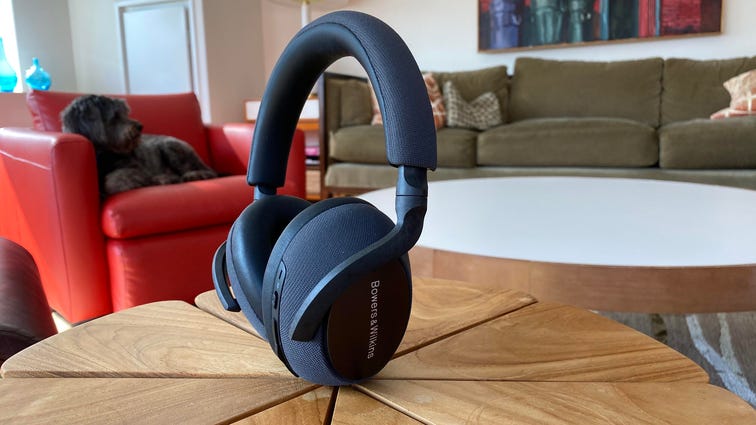

David Carnoy/CNET
I liked Bowers & Wilkins’ original PX noise-canceling over-ear headphones, but they were slightly lacking in the comfort and noise-canceling departments. The company’s new PX7 headphones, released in the fall of 2019, improve on both fronts with excellent sound, four noise-canceling settings (Automatic, Low, High and Off) and well-padded ear cushions in a sturdy, eye-catching design. There’s also an adjustable ambient “transparency” mode that allows you to hear the outside world.
The headphones are a tad heavy at 10.7 ounces (304 grams), but the build quality is top-notch. Bowers & Wilkins also makes a more compact on-ear model, the PX5, which cost $100 less and are also quite good. But the PX7s do sound a little better.
The sound is rich and detailed with deep bass that remains well-defined even at high volumes. These are pretty dynamic headphones, with a touch of extra energy in the mid-highs. They’re not laid-back like the earlier PX5 Wireless and the most direct competitor is probably the Sennheiser Momentum 3 above. That Sennheiser is arguably superior for making calls, but this B&W probably wins on design.
These Bluetooth headphones support AAC and aptX, use Bluetooth 5.0, charge via USB-C and have up to 30 hours of battery life at moderate volume levels. The noise cancellation isn’t quite at the level of the Bose or the Sony in this roundup, but it’s not far off — as I said, it’s improved from the original PX’s noise canceling.

 \n ","topic":"","ttag":"","variant":"","viewguid":"","event":"listicle|image|12","correlationId":"","_destCat":"https:\/\/www.amazon.com\/dp\/B000AJIF4E","productName":"Oldie but goodie","formatType":"IMAGE","location":"LIST","position":12,"sku":"MDR-7506","dwLinkTag":"article-body|listicle|image","selector":"#article-body #listicle-1a99517e-24b2-4e21-93ca-9b71417acfd7 .itemImage"}}” rel=”noopener nofollow” target=”_blank”>
\n ","topic":"","ttag":"","variant":"","viewguid":"","event":"listicle|image|12","correlationId":"","_destCat":"https:\/\/www.amazon.com\/dp\/B000AJIF4E","productName":"Oldie but goodie","formatType":"IMAGE","location":"LIST","position":12,"sku":"MDR-7506","dwLinkTag":"article-body|listicle|image","selector":"#article-body #listicle-1a99517e-24b2-4e21-93ca-9b71417acfd7 .itemImage"}}” rel=”noopener nofollow” target=”_blank”>


Sarah Tew/CNET
Introduced way back in 1991, the Sony MDR-7506 has long been a favorite headphone of recording engineers and other sound professionals (yes, these are wired headphones). The origins of its design date even further back, since the MDR-7506 headphones are, in fact, a refresh of the Sony MDR-V6 that rolled out in 1985. Both models were designed for the pro sound market, but remain hugely popular with consumers.
While the two models have the same design and are very comfortable, they don’t sound identical. Both offer very well-balanced sound and excellent clarity for their modest prices — and both are great overall values. But the MDR-V6 headphones make a little more bass and sound more laid-back and mellow, while the 7506 headphones are leaner with a more accentuated treble range, which makes the sound a little crisper and livelier.

 \n ","topic":"","ttag":"","variant":"","viewguid":"","event":"listicle|image|13","correlationId":"","_destCat":"https:\/\/www.amazon.com\/GRADO-SR225x-Prestige-Open-Back-Headphones\/dp\/B091G6N36N","productName":"Top open-back wired headphones for the money","formatType":"IMAGE","location":"LIST","position":13,"sku":"","dwLinkTag":"article-body|listicle|image","selector":"#article-body #listicle-cff0415c-ffeb-4d6f-a711-a6429da99107 .itemImage"}}” rel=”noopener nofollow” target=”_blank”>
\n ","topic":"","ttag":"","variant":"","viewguid":"","event":"listicle|image|13","correlationId":"","_destCat":"https:\/\/www.amazon.com\/GRADO-SR225x-Prestige-Open-Back-Headphones\/dp\/B091G6N36N","productName":"Top open-back wired headphones for the money","formatType":"IMAGE","location":"LIST","position":13,"sku":"","dwLinkTag":"article-body|listicle|image","selector":"#article-body #listicle-cff0415c-ffeb-4d6f-a711-a6429da99107 .itemImage"}}” rel=”noopener nofollow” target=”_blank”>
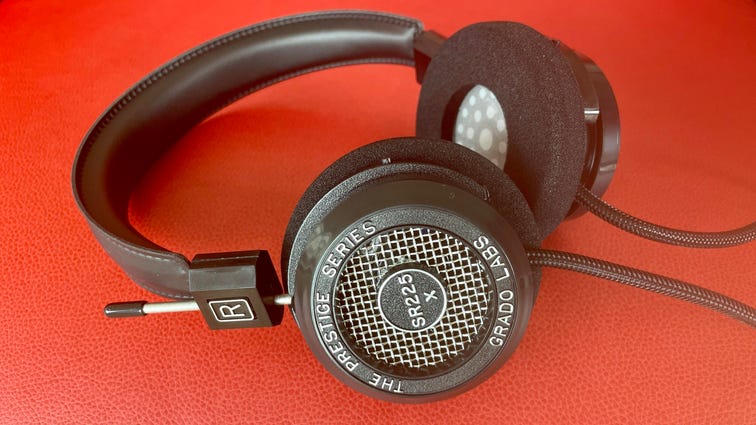

Sarah Tew
Grado has upgraded its entry-level line of Prestige Series wired headphones for 2022. Hand-built, the line includes the SR60x, SR80x, SR125x, SR225x and SR325x, and they’re all very good at their various prices. Arguably, however, the $225 SR225x headphones hit the sweet spot if you’re looking for open-back audiophile-grade headphones that won’t cost you an arm and a leg.
This updated model features a more durable eight-conductor cable infused with “super annealed” copper for “improved purity of the audio signal,” a more comfortable headband design and updated fourth-generation 44mm drivers that further cut down on distortion and are also more energy-efficient, making them easier to drive. I not only used these headphones with an external headphone amplifier attached to my computer but with an iPhone using a Lightning-to-3.5mm adapter. They had plenty of volume when connected directly to the iPhone.
Open-back headphones are supposed to produce more open sound and these do just that, with powerful, controlled bass and natural, warm-sounding mids (where vocals live) along with excellent overall clarity. Stepping up to the SRS325x should give you a little bit more bass energy, but you’re not looking at a big jump in sound quality. As with any open-back headphones, these do leak some sound, so people around you can hear what you’re listening to.
These headphones have semisoft foam earpads that, when you first put them on, you wouldn’t think would be that comfortable over longer listening sessions. But they end up being more comfortable than you’d expect and the new headband design does help in that department. For entry-level audiophile-grade headphones that cost less than $250, it’s hard to do better than the SR225x.

 \n ","topic":"","ttag":"","variant":"","viewguid":"","event":"listicle|image|14","correlationId":"","_destCat":"https:\/\/www.amazon.com\/BackBeat-FIT-6100-Headphones-Water-Resistant\/dp\/B07WHF7PT4","productName":"Over-ear for sports","formatType":"IMAGE","location":"LIST","position":14,"sku":"","dwLinkTag":"article-body|listicle|image","selector":"#article-body #listicle-4523844b-4f91-4c26-a545-4256e6dd5826 .itemImage"}}” rel=”noopener nofollow” target=”_blank”>
\n ","topic":"","ttag":"","variant":"","viewguid":"","event":"listicle|image|14","correlationId":"","_destCat":"https:\/\/www.amazon.com\/BackBeat-FIT-6100-Headphones-Water-Resistant\/dp\/B07WHF7PT4","productName":"Over-ear for sports","formatType":"IMAGE","location":"LIST","position":14,"sku":"","dwLinkTag":"article-body|listicle|image","selector":"#article-body #listicle-4523844b-4f91-4c26-a545-4256e6dd5826 .itemImage"}}” rel=”noopener nofollow” target=”_blank”>


Some people, particularly weightlifters, like to work out in full-size headphones, and the BackBeat Fit 6100 over-the-ear wireless headphones are a very solid choice for both the gym and everyday use. They have an adjustable sport-fit headband, an IPX5-rated water-resistant and sweat-proof design, 40mm angled drivers and noise-isolating earcups with an “Awareness” mode. Battery life is rated at 24 hours. The sound quality is quite good and the headphones stay on your head securely — you can adjust the tension in the headband, which is innovative and ideal for exercise headphones.
Note that Plantronics has discontinued its entire BackBeat headphones line, so this model should drift out of the market by the 2021 year’s end. It started out at $180 and now costs half that and usually even less.
